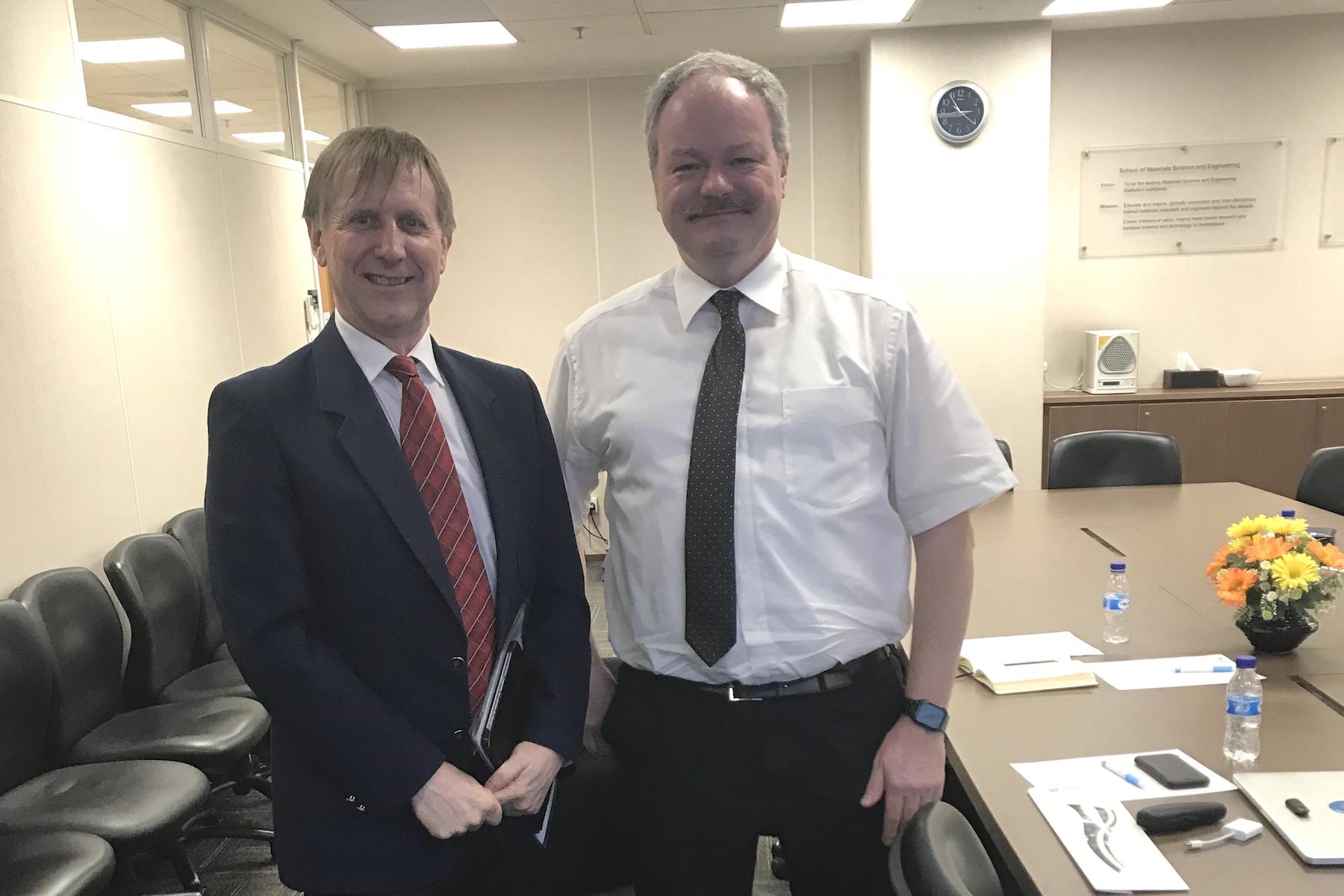Promoting future scientific opportunities at ESS among the academic community in Singapore

In picture above: ESS Director for Science, Andreas Schreyer (R), together with Associate Vice President for Infrastructure and Programmes, and Research Director for Engineering and Physical Sciences at NTU, Tim White (L).
SINGAPORE – The School of Materials Science and Engineering (MSE) of the Nanyang Technological University (NTU) hosted a seminar about ESS on 21 February 2019. During his talk, ESS Director for Science, Andreas Schreyer, explained to the audience how ESS is designed to push the frontier of neutron science and how neutron techniques are complementary to those offered by X-ray facilities.
The MSE thrives to provide students with an integrated science-driven engineering education and equip them with the latest scientific and technological knowledge and skills. The ESS seminar about the future world-leading neutron source and the opportunities it will bring to advance cutting-edge research fitted well with this ambition.
During his talk, Mr. Schreyer also introduced the BrightnESS² project and outlined how it could provide a platform to strengthen collaboration between ESS and Singapore. The research strengths of NTU, the university’s R&D collaborations with industries from around the world, and the neutron users active at the university could benefit from the state-of-the-art instrumentation foreseen at ESS. The NTU already has strong academic relations with one of ESS Host Countries, Sweden, through student exchange programmes.
During the second day of the visit on 22 February 2019, Mr. Schreyer met Lim Khiang Wee, the Executive Director of the National Research Foundation (NRF) which is located at the Campus for Research Excellence and Technological Enterprise (CREATE). The NRF decides on the direction of national policies, plans, and strategies for research and development. It was established in 2006 with the vision to transform Singapore into a science and technology hub.
A meeting with Mark Breese, the Director of the Singapore Synchrotron Light Source (SSLS), followed. The SSLS is a university-level research centre under the auspices of the National University of Singapore. Since its establishment in 1999, SSLS has grown its user community and now serves both local as well as international groups from academic institutes and industry alike.
“The discussions clearly showed that there is a huge potential for a very productive partnership between research institutions in Singapore and ESS and MAX IV,” said Andreas Schreyer. “The co-location of both facilities with Science Village Scandinavia in between is attractive for countries looking to establish collaborations with the latest state-of-the-art neutron and synchrotron facilities,” he added.
The visit to Singapore was a follow-up on an earlier meeting from July 2018 when NTU visited Lund to learn more about ESS. To further build on the discussions held up to date, ESS will host a delegation from Singapore later this year.

